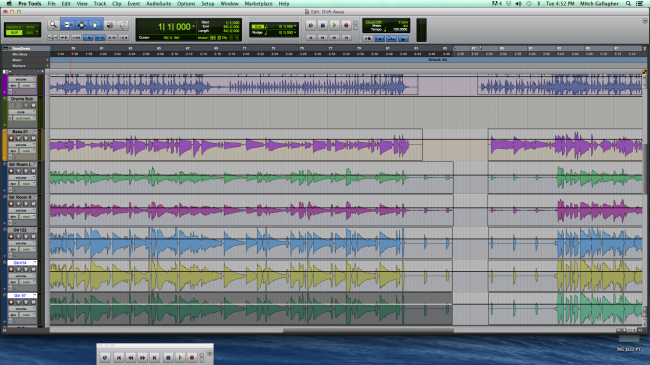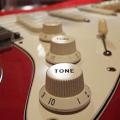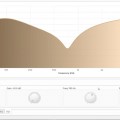This is a guest post by Ben from Subreel. This isn’t our typical conversation we have on Effects Bay, but I thought a few of you would find it very interesting. With home recording happening ALL the time now-a-days, many of you are probably interested on how to improve your recorded guitar tone. Without further ado, here is Ben!
Guest Post: How to Improve Your Guitar Sound in Post-Production
 How times have changed. 40 or 50 years ago being able to find somewhere to record onto more than eight or even four tracks could be a challenge, and when you did the costs were astronomical. Few could have imagined that eventually we would all have the potential to record and produce music at home and even on handheld devices.
How times have changed. 40 or 50 years ago being able to find somewhere to record onto more than eight or even four tracks could be a challenge, and when you did the costs were astronomical. Few could have imagined that eventually we would all have the potential to record and produce music at home and even on handheld devices.
Along with all of that freedom comes a lot of room for error, getting the recording right in the first place can be tough, and then we come to the art of post-production as we are discussing in this post. So how can you improve your guitar sound in post?
Most will be familiar with the concept of a DAW, and how this acts as a central hub for your recordings. Most are expandable with plugins and extra features, some have them built in, but all should be capable of providing enough to vastly improve your guitar sound.
Double Tracking
The oldest trick in the book. So many of the guitars we hear in modern recordings are double tracked. This can take the form of two recordings of the same thing, or can alternatively be the same recording but duplicated. Simply adding two versions of the same thing won’t do the business, but pan one to the left and one to the right and you’ll start seeing the ‘stereo’ effect, and a widening sound which is far more immersive. Delay one of the tracks by 10-20ms and suddenly the thickness of the sound will start to show.
Compression
Compression is an area of some debate among musicians. Mastering engineers have been accused of overusing it, but whatever your thoughts on compressors (you may well have a compressor pedal) our ears are used to hearing compressed guitars. With solos you may not want to overdo it as you can start to kill the dynamics and expression, but for rhythm guitars it is nothing short of essential to compress and provide a solid basis for your track. Whether you compress during recording or not, using your DAW’s compressor to check and tidy up your guitar sound is a must.
EQ
EQ is not a glamorous effect, but it is so underrated. In post production, it is your secret weapon. EQ pedals are helpful, but EQ plugins give more of a visual representation of frequencies and make your life much simpler. If there are some annoying frequencies you need to filter out it is much easier to find them within a DAW.
Guitars belong in the middle frequencies with a touch of high-end too. Many of the bass frequencies are totally pointless and should be filtered out to leave space for your bass guitar and to clean up your overall mix.
Reverb
Another example of life being much easier in post-production. Your amp may have reverb, you may have a reverb pedal, but there are hundreds of different reverb plugins available for DAW. Spring, digital, algorithmic, there are tons of options at your fingertips which probably won’t be the case in your pedalboard. That’s not to say that you shouldn’t use the reverb at your disposal, but adding a touch of reverb in post production can tie everything together.
Conclusion
“Fix it in the mix†is not a philosophy I like to go by. You need to start with strong recordings and strong playing, but post-production is the final piece of the puzzle, and a few small tweaks can make the world of difference, even if you’re no Tony Visconti.





Leave a Reply